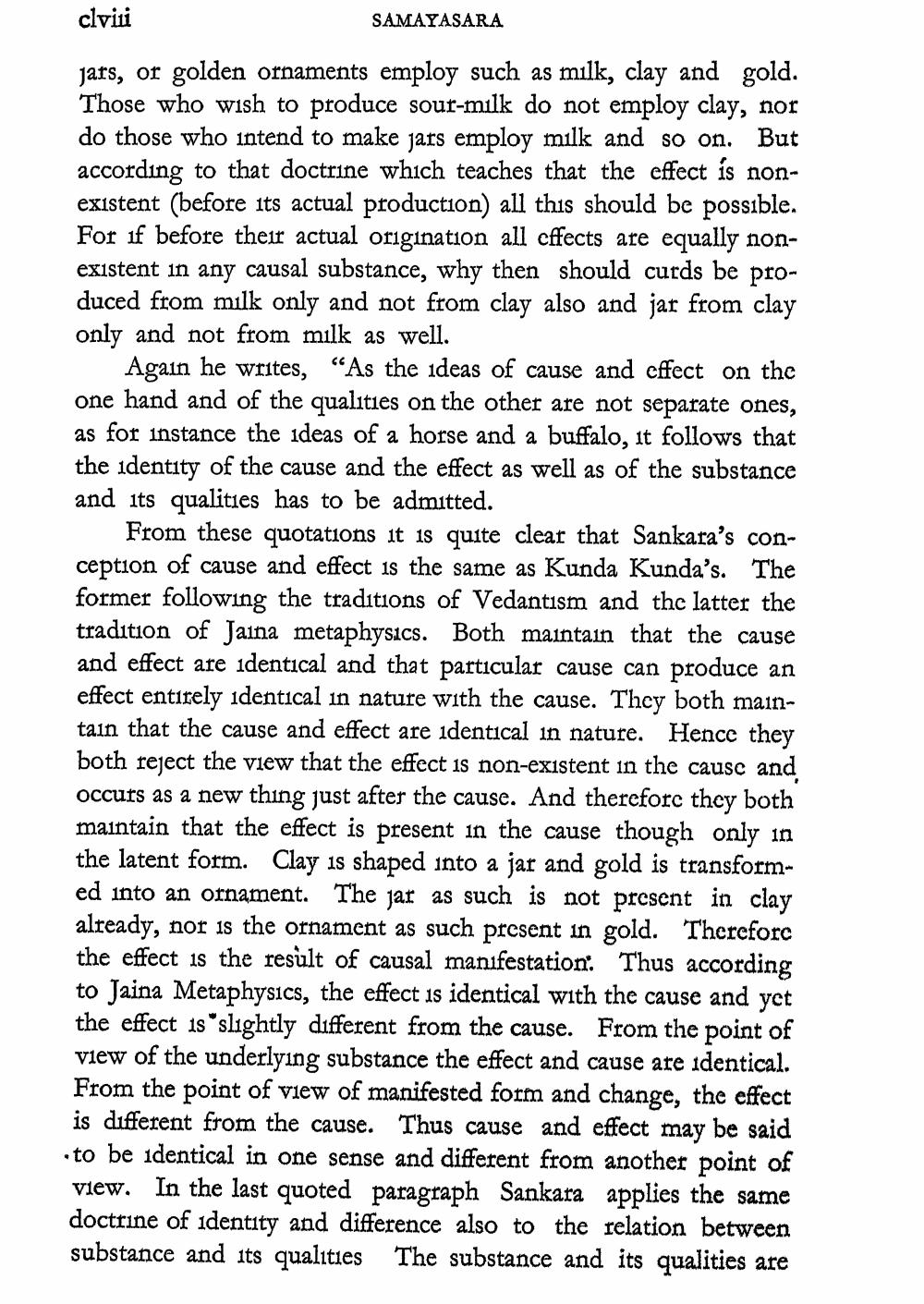________________
clviti
jars, or golden ornaments employ such as milk, clay and gold. Those who wish to produce sour-milk do not employ clay, nor do those who intend to make jars employ milk and so on. But according to that doctrine which teaches that the effect is nonexistent (before its actual production) all this should be possible. For if before their actual origination all effects are equally nonexistent in any causal substance, why then should curds be produced from milk only and not from clay also and jar from clay only and not from milk as well.
Again he writes, "As the ideas of cause and effect on the one hand and of the qualities on the other are not separate ones, as for instance the ideas of a horse and a buffalo, it follows that the identity of the cause and the effect as well as of the substance and its qualities has to be admitted.
SAMAYASARA
From these quotations it is quite clear that Sankara's conception of cause and effect is the same as Kunda Kunda's. The former following the traditions of Vedantism and the latter the tradition of Jaina metaphysics. Both maintain that the cause and effect are identical and that particular cause can produce an effect entirely identical in nature with the cause. They both maintain that the cause and effect are identical in nature. Hence they both reject the view that the effect is non-existent in the cause and occurs as a new thing just after the cause. And therefore they both maintain that the effect is present in the cause though only in the latent form. Clay is shaped into a jar and gold is transformed into an ornament. The jar as such is not present in clay already, nor is the ornament as such present in gold. Therefore the effect is the result of causal manifestation. Thus according to Jaina Metaphysics, the effect is identical with the cause and yet the effect is slightly different from the cause. From the point of view of the underlying substance the effect and cause are identical. From the point of view of manifested form and change, the effect is different from the cause. Thus cause and effect may be said to be identical in one sense and different from another point of view. In the last quoted paragraph Sankara applies the same doctrine of identity and difference also to the relation between substance and its qualities The substance and its qualities are




